
Tai Chi Week
At The Falmouth Hotel
Castle Beach, Cliff Road, Falmouth, TR11 4GD
Monday 28th – Friday 1st August 2025
- A week of Tai Chi and Qigong
- Each day will be 10am – 4 p.m


Summer Term Tai Chi and Qigong at the Zedshed is every Wednesday evening 7:45 to 9:15 pm, beginners are welcome to join at any time during the term. You can pay on the day for one lesson or block book for a discount. You can pay online with your debit or credit card, paypal or bank transfer, or book online and pay at the class in cash.
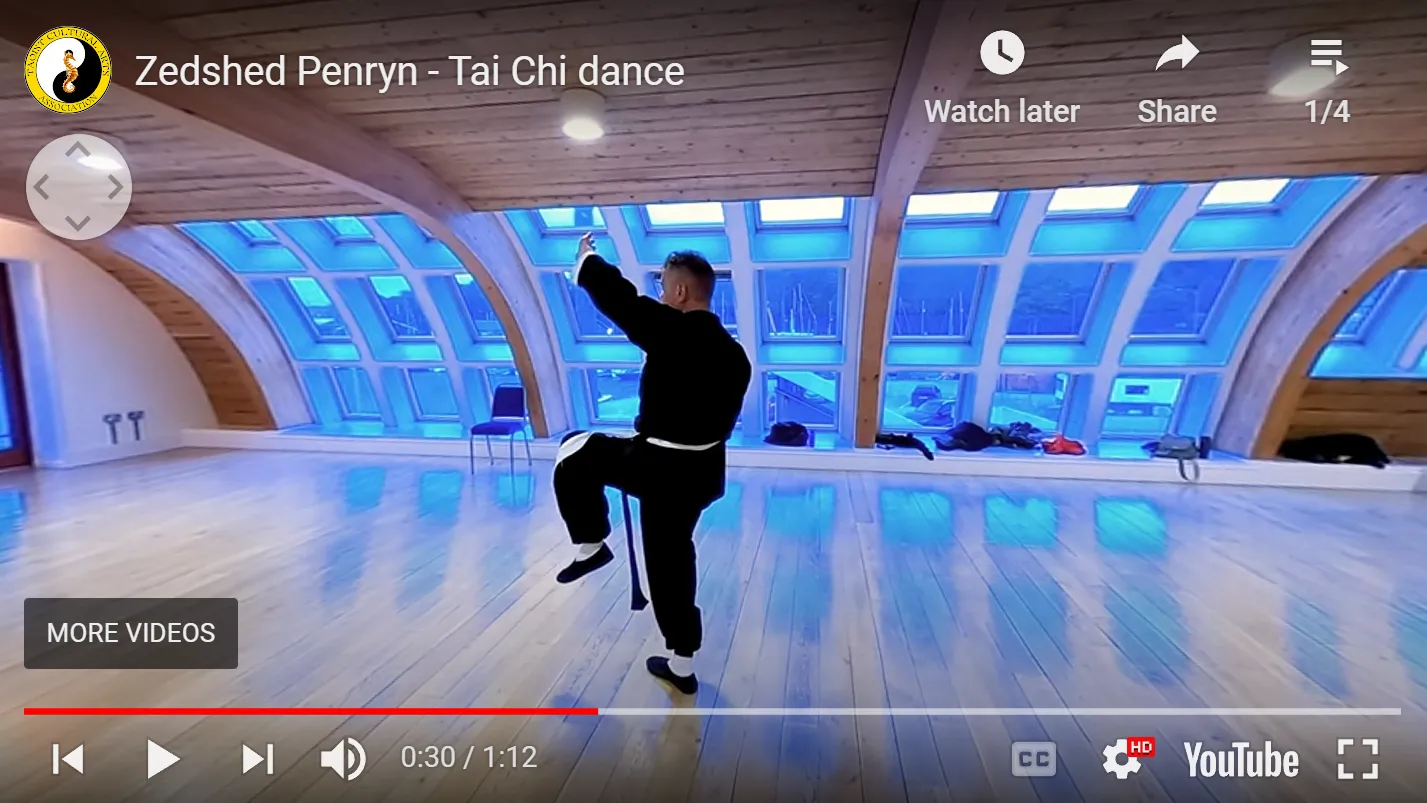
This youtube video playlist will serve as a little window into the Zedshed class in Penryn to give you some idea of what it’s like in the class. If you click or touch the picture above you will see you can drag left or right to see what is going on in the rest of the room. You can in actual fact use this video playlist to practice what we did in the class at home so next time we can move onto the next sequence of moves, in this particular form there are 184, this is the first twenty.
Every week we do some exercises like forms which we gradually build on from week to week. Beginners will start with the first ten moves. However some of the exercises will be different each week, and some we will concentrate on for a few weeks until we move on to another set of exercises. We have forms, qigong, breathing exercises, and partner exercises of many different varieties in Lee style Tai Chi so there’s plenty to interest both the beginner and the more advanced student.


Qi is a fundamental concept in Chinese culture and traditional medicine. Everything is composed of Qi, solids, liquids, gasses, rarefied energy forms like electromagnetism, light, and plasma, in fact, the entire Universe is composed of Qi.
However, the kind of Qi that is of primary importance in Tai Chi is your own personal Qi which can be thought of as a kind of battery pack inside you that is constantly supplying your body mind, and spirit with energy. This is the Qi that is referred to in the Neijing or Yellow Emperor’s classic of internal medicine, the classic of ancient Chinese medicine, often translated as “life force” or “vital energy,” and is the vital essence of all living things. According to traditional Chinese medicine, Qi flows through the body along specific pathways known as jingluo (经络) or meridians which are associated with the internal organs. Qi is also stored in vessels throughout the body that act as reservoirs or energy buffers. When Qi is flowing freely, a person is healthy and balanced. When Qi is blocked or deficient, mental, physical and spiritual illness and disease can occur.
In Tai Chi, Qi is often described as the energy that powers the movements of the body. It flows through the body in a smooth and continuous manner, creating a sense of internal harmony and balance. The goal of Tai Chi practice is to cultivate and harmonize Qi, allowing it to flow freely throughout the body.
In traditional Chinese medicine, Jing, Qi and Shen are three fundamental substances known as The Three Treasures.
Jing is the stored essence of the body, including the bones, marrow, and reproductive fluids. Jing is stored in the kidneys and can also be found in the bone marrow, the brain, and the energy meridians, especially the extraordinary vessels or eight extra meridians which act as buffers for the Qi.
Qi is ruled by the lungs, it is derived from Clean air Qi, Food Qi, and Ancestral Qi also known as kidney Yin or Jing (Essence). The lungs also produce Wei Qi which is a special layer of defensive Qi that protects the outer surface of the body from invasion by pathogenic factors.
Shen is the spirit or consciousness, including emotions, thoughts, and perceptions. Shen is stored in the Heart and is composed of five Shens, each of which resides in a particular organ. These five aspects of Shen are associated with the five elements (water, wood, fire, earth, and metal) and have emotional qualities that correspond to each element. For example, the Shen associated with the Liver is associated with the Wood element and is believed to influence emotions such as anger, frustration, and creativity. Similarly, the Shen associated with the Kidneys is associated with the Water element and is believed to influence emotions such as fear, wisdom, and willpower.
The three treasures are intimately connected, and each one affects the others. For example, when Jing is strong and healthy, it can support the cultivation of Qi and Shen. When Qi is flowing freely, it can nourish Jing and support the health of the body. When Shen is calm and peaceful, it can help to harmonize Qi and Jing.
In Tai Chi, the cultivation of Qi is seen as a way to harmonize and balance all three treasures, leading to improved health and well-being.
There are many ways to cultivate Qi in Tai Chi practice. Here are some key principles to keep in mind:
Cultivating Qi in Tai Chi practice can have many benefits for your physical, mental, and emotional health. Here are just a few examples:
In conclusion, the cultivation of Qi is an essential element of Tai Chi practice. Cultivating Qi can improve physical, mental, and emotional health, and is a key factor in the overall benefits of Tai Chi. By incorporating principles such as relaxation, breath control, mindfulness, and visualization into your Tai Chi practice, you can enhance the flow of Qi throughout your body and reap the many benefits that come with it.
If you’re interested in learning more about Tai Chi and how to cultivate Qi, consider joining a Tai Chi class. A skilled instructor can guide you through the movements and help you develop a deeper understanding of the role of Qi in Tai Chi practice. With regular practice and dedication, you can unlock the power of Qi and experience the many benefits that Tai Chi has to offer.


A new Tai Chi society has been formed at Falmouth and Exeter University Students’ Union. There are two classes per week one on each campus. Please visit the website and sign up if you are interested. Students can join the FXU Tai Chi Soc for £5.
Staff members and the public can join if they become associate members of the Students’ Union which costs £25 per year, sign up here.
Then the fee for joining the FXU Tai Chi Society is £10 payable annually, join here.

The cultural revolution in China 1966-1976 saw Tai Chi outlawed and so a whole generation grew up without it, consequently Tai Chi classes can be seen as the doamin of seniors. This is actually an accident of history and Tai Chi is suitable for people all of types whatever age, gender, level of ability, nationality, beliefs or social standing.
Tai Chi and Qigong can be incredibly helpful for you as a university student, making it easier to handle the pressures of academic life while staying balanced and focused. These practices bring together the mind, body, and spirit, using gentle movements, deep breathing, and focused awareness. When you practice Tai Chi and Qigong, you’ll find that your ability to concentrate improves, allowing you to study for longer periods without feeling mentally exhausted. This sharper focus makes it easier to retain information and stay engaged with your coursework.
One of the best benefits you’ll experience is stress relief. University life can be intense, with assignments, exams, and deadlines piling up, but Tai Chi provides a way to release that tension. The slow, flowing movements help calm your mind and relax your body, making it easier for you to manage stress and stay emotionally balanced. With less stress, you’ll find yourself better equipped to handle the ups and downs of student life, keeping a more positive outlook even when things get tough.
Physically, Tai Chi and Qigong also improve your flexibility and balance. As you practice, you’ll loosen up tight muscles, increase your range of motion, and build resilience to the physical demands of everyday life. Plus, you’ll notice a boost in your energy levels, helping you feel more refreshed and ready to take on both your academic work and your social life without feeling drained.
Incorporating Tai Chi and Qigong into your routine can have a profound impact on your overall well-being. By doing so, you’ll enhance your focus, reduce stress, and maintain a positive, balanced mindset. Ultimately, these practices will help you manage the demands of university life with more energy and ease, allowing you to thrive both academically and personally.
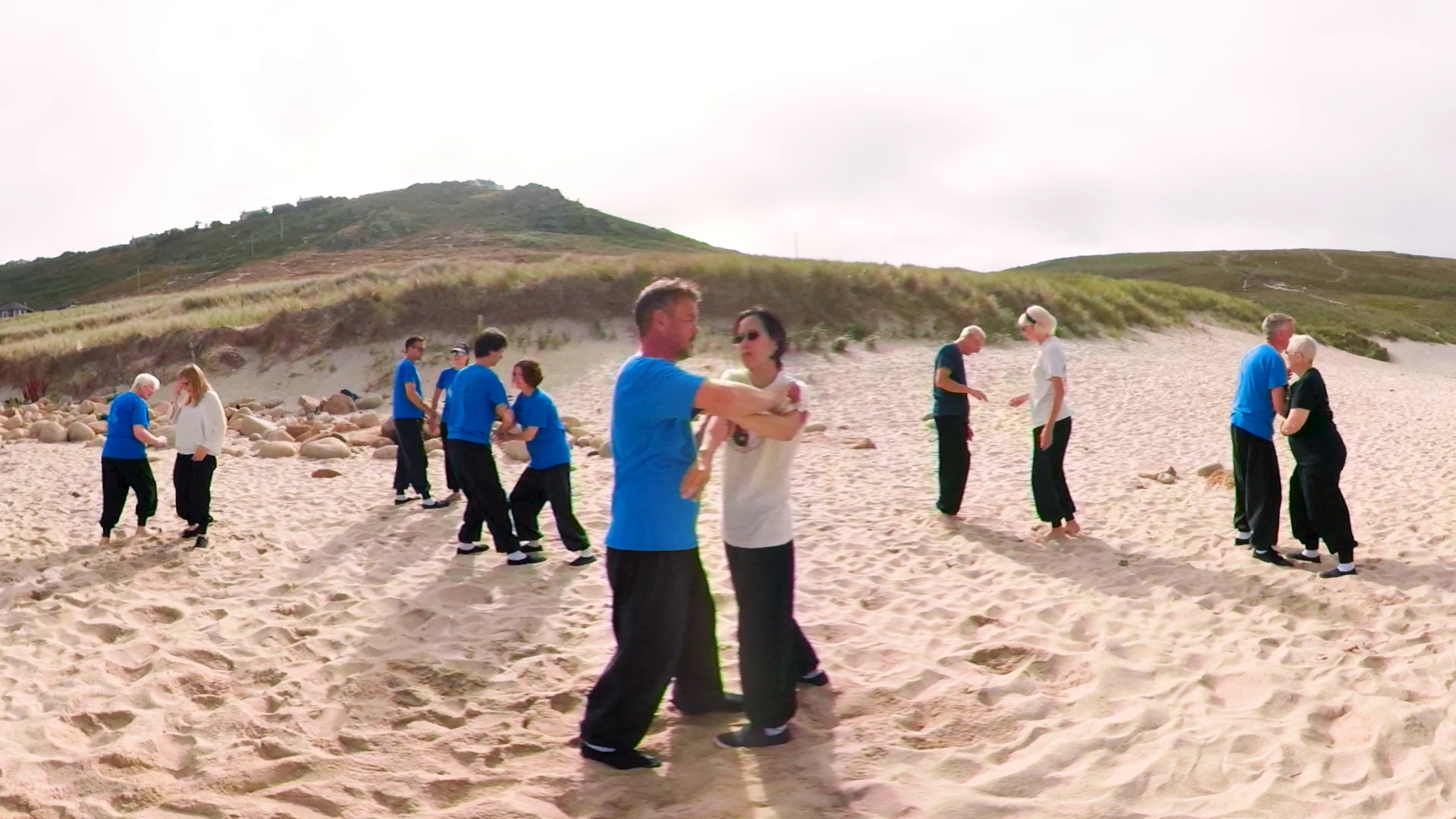
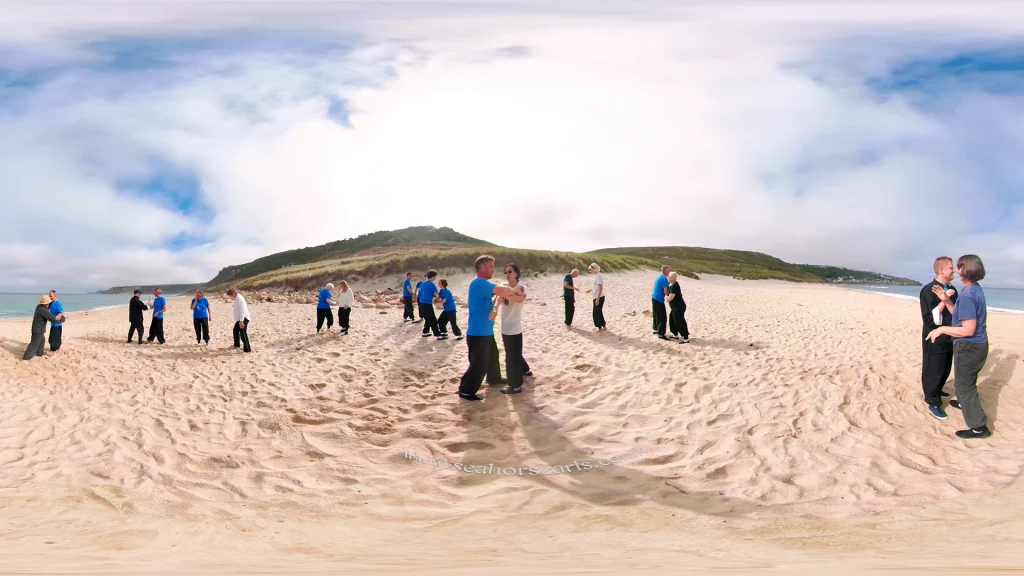
For many in the West, the image of Tai Chi often conjures up a group of elderly Chinese individuals practicing fluid movements in a park at dawn. This perception, while partly true, is deeply rooted in historical contexts and doesn’t give justice to the art’s universality and extensive benefits. So, is Tai Chi just for the elderly? Absolutely not.
To clarify this misconception, we need to dive briefly into Chinese history. During the Cultural Revolution of 1966-1976, many traditional practices, including Tai Chi, were banned. This prohibition created a generational gap in Tai Chi’s transmission. Older individuals who had previously learned the art could retain their knowledge. In contrast, the younger generation missed out on this traditional wisdom, leading to the stereotype that Tai Chi was solely for the aged.
Historically, Tai Chi was an integral part of family traditions, passed down from grandparents to parents to children. This intergenerational transmission ensured the art’s longevity and universal practice.
My teacher Chee Soo was in his sixties when I met him but his classes were drawn from a diverse range of people of all social classes, all age groups and genders. I was a philosophy student at Warwick University and there were many students at his class in Leamington Spa and also trainee acupuncturists from the J.R.Worsley acupuncture college. For me, two key takeaways were learning how to manage stress and discovering the Taoist philosophy that underlies Tai Chi. I found this philosophy particularly intriguing, not just because of its practical and down-to-earth nature, but also because my university only offered English and American philosophy, lacking in Eastern perspectives. I also found the health benefits to be of use and the meditational aspect and the breadth and depth of the teaching really gave me pause for thought and helped me to look at life in a completely different way.
1. Mental Focus and Clarity: At the heart of Tai Chi lies the union of mind and body. According to Verywellmind, Tai Chi harmoniously integrates physical exercise with meditation. This union not only amplifies physical wellness but also enhances mental clarity, a critical component for academic brilliance.
2. Energy Conservation and Restoration: All too often, students find themselves drained from long study sessions. Tai Chi, especially when complemented with qigong, offers techniques to manage, conserve, and rejuvenate one’s energy, facilitating more extended, more efficient study periods.
3. Developing Defense Abilities: Beyond its serene appearance, Tai Chi is a martial art. As indicated by the Internet Public Library, students can harness Tai Chi to develop defensive skills, bolstering confidence and personal safety.
4. Holistic Physical Benefits: It’s no secret that physical activity boosts academic performance. But not all exercises are created equal. Tai Chi’s gentle movements, as highlighted by Harvard Health, positively impact muscle strength, flexibility, and balance.
5. Addressing Common Health Concerns: College life can sometimes exacerbate health issues due to stress, irregular schedules, and inadequate diets. Tai Chi provides relief from ailments like arthritis, rheumatism, back problems, and balance disorders, as noted by 123helpme.
6. Stress Management: Stress is arguably the most common ailment among students. Tai Chi, with its meditative foundation, provides a natural remedy for managing and mitigating academic stress.
1. Bolstering Mental and Physical Stamina: Workplaces can be demanding. Drawing on LinkedIn’s insights, Tai Chi strengthens both the mind and body, equipping professionals with the resilience needed to handle corporate pressures.
2. Enhancing Team Dynamics: Teamwork makes the dream work. Beyond individual benefits, Tai Chi can be a team-building tool, fostering cooperation and harmony among colleagues, vital for a positive work environment.
3. Combatting Workplace Stress: Deadlines, meetings, and targets – the modern workplace is a hub of stressors. Incorporating Tai Chi into the daily routine can be a game-changer in managing and reducing job-related stress.
4. Augmenting Physical Fitness and Flexibility: Extended hours at a desk can take a toll on one’s physical health. Tai Chi, as Medical News Today suggests, enhances overall fitness and flexibility, preventing common workplace-related physical issues.
5. Holistic Empowerment: Rooted in Taoist philosophy, Tai Chi adopts a comprehensive approach to well-being. It isn’t just about physical health. It’s about mental empowerment, clarity, and a profound connection to one’s inner self.
It’s high time we challenge and change our perceptions of Tai Chi. It isn’t an art restricted to any age group, nationality, or fitness level. Its universal principles and benefits make it relevant for the bustling student community and the ever-evolving world of employment.
Embracing Tai Chi could be the key to unlocking a balanced, harmonious, and productive life. Its teachings offer practical solutions to contemporary challenges, making it a timeless art deserving of universal appreciation and practice. So, whether you’re grappling with academic pressures or workplace challenges, consider giving Tai Chi a whirl. It might just be the holistic solution you’ve been seeking.


A new study finds that Tai Chi has a proven effect on cognitive decline. In our fast-paced world, maintaining a sharp and vibrant memory is a top priority for many. As we age, our cognitive abilities often experience a natural decline, leading to memory issues and other cognitive challenges. Tai Chi, an ancient Chinese martial art, offers a unique approach to enhancing memory and cognitive function. In this blog post, we will delve into the fascinating connection between Tai Chi and memory, exploring its roots in Chinese medicine and the flow of qi, as well as the concept of jing and its links to memory. We will also discuss a recent study that supports the benefits of Tai Chi for memory enhancement.
Tai Chi is deeply rooted in Chinese medicine, a holistic system of healthcare that dates back thousands of years. Central to the philosophy of Chinese medicine is the concept of qi, or life force. Qi is believed to flow through the body along energy pathways called meridians, and any disruption in this flow can lead to physical and mental imbalances.
Tai Chi, often described as “meditation in motion,” is designed to enhance the flow of qi throughout the body. The slow, graceful movements of Tai Chi help to unblock any energy stagnation, allowing for a smoother and more harmonious flow of qi. This, in turn, is believed to support overall health, including cognitive function and memory.
Chinese medicine suggests that a balanced and abundant flow of qi contributes to optimal cognitive function. When the flow of qi is smooth and unrestricted, it nourishes the brain and improves its functioning. This nourishment is vital for memory retention and recall.
A study conducted by the University of Maryland Medical School, published in the Annals of Internal Medicine, examined the effects of Tai Chi on cognitive function and memory in adults. The study involved participants who practiced Tai Chi regularly over a period of 6 months. The results demonstrated significant improvements in memory and cognitive performance among the Tai Chi practitioners compared to the control group.
In addition to the concept of qi, Chinese medicine also places great importance on the notion of “jing,” which is often associated with the water element. Jing is considered the essence of life and is closely linked to memory and cognitive functions. In Chinese medicine, the kidneys are believed to be the storage reservoirs of jing, and their health is paramount for memory preservation.
The slow, flowing movements of Tai Chi are said to support the kidneys and maintain the balance of jing, ultimately contributing to improved memory and cognitive function. Just as water nourishes the earth, Tai Chi nourishes the kidneys, ensuring they continue to store and release jing effectively.
The study conducted by the University of Maryland Medical School supported the Chinese medicine principles of jing and the water element. The findings revealed that Tai Chi not only enhanced memory but also showed a positive impact on kidney function, indirectly linking it to the preservation of jing.
Tai Chi, deeply rooted in Chinese medicine, is a holistic practice that enhances the flow of qi and supports the balance of jing, the essence of life. This ancient art form has been shown to have a positive impact on memory and cognitive function, as demonstrated in the University of Maryland Medical School study. If you’re looking to sharpen your memory, improve cognitive function, and embrace a healthier lifestyle, Tai Chi may be the perfect solution. Join our Tai Chi society and experience the benefits for yourself. By engaging in this beautiful practice, you’ll not only connect with the wisdom of Chinese medicine but also nurture your body, mind, and memory for years to come.
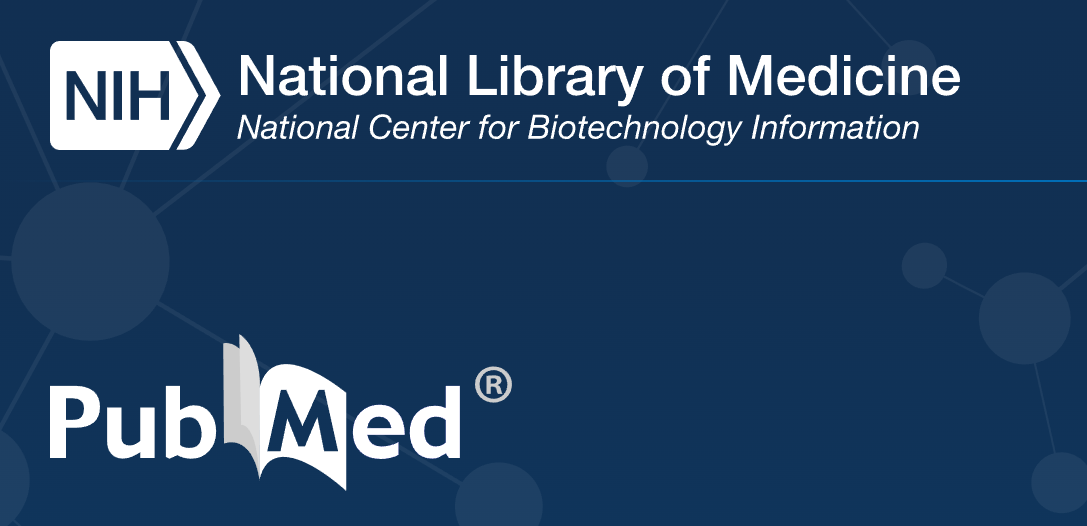
Tai Chi is a form of soft internal style martial arts that has gained widespread popularity across the world in recent years. It is a low-impact, meditative practice that has been found to have numerous physical, mental, and emotional benefits. Many people may be drawn to Tai Chi due to its reputation for reducing stress and promoting relaxation, but there is much more to this practice than meets the eye. In this blog post, we will explore the science of Tai Chi, examining the research and evidence supporting the many benefits of this ancient practice.
One of the most well-known benefits of Tai Chi is its ability to improve physical health. Tai Chi is a low-impact form of exercise that can be performed by people of all ages and fitness levels. It has been found to improve cardiovascular health, balance, flexibility, and muscle strength.
Several studies have shown that practicing Tai Chi can improve balance and reduce the risk of falls in older adults. For example, a study published in the Journal of the American Geriatrics Society found that practicing Tai Chi for six months reduced the risk of falls by 47% in a group of older adults 1. Another study published in the Journal of Gerontology found that Tai Chi improved balance and increased leg strength in a group of elderly women 2.
Tai Chi has also been found to be beneficial for people with chronic conditions such as arthritis, heart disease, and chronic pain. A study published in the Journal of Rheumatology found that Tai Chi improved pain, function, and quality of life in people with knee osteoarthritis 3. Another study published in the journal Heart found that Tai Chi improved cardiovascular health in a group of people with heart failure 4.
In addition to the physical benefits, Tai Chi has also been found to have numerous mental and emotional benefits. Many people practice Tai Chi to reduce stress and promote relaxation, and studies have shown that Tai Chi can be effective in achieving these goals.
A study published in the Journal of Psychiatric Research found that practicing Tai Chi for 12 weeks reduced symptoms of depression in a group of older adults 5. Another study published in the Journal of Alternative and Complementary Medicine found that Tai Chi improved mood and reduced anxiety in a group of people with heart disease 6.
Tai Chi has also been found to improve cognitive function and memory. A study published in the Journal of Alzheimer’s Disease found that practicing Tai Chi for 20 weeks improved cognitive function in a group of older adults with mild cognitive impairment 7.
So, how does Tai Chi work to provide these many benefits? There are several mechanisms by which Tai Chi is believed to work, including:
The benefits of Tai Chi are clear, and the science supporting this practice is well-established. Whether you are looking to improve your physical health, reduce stress and anxiety, or simply try something new, Tai Chi is a practice that can benefit people of all ages and fitness levels.
If you are interested in trying Tai Chi, there are many options available. Look for a local Tai Chi club or community center that offers classes. When choosing a Tai Chi class, it is important to look for a qualified instructor who has experience teaching Tai Chi to beginners.
In addition to attending classes, you can also practice Tai Chi on your own at home. There are many instructional videos and books available that can guide you through the practice of Tai Chi. Just remember to start slowly and gradually increase the intensity of your practice over time.
Overall, the science of Tai Chi is clear: this ancient practice offers numerous physical, mental, and emotional benefits. By incorporating Tai Chi into your daily routine, you can improve your overall health and well-being and enjoy a more relaxed, balanced, and fulfilling life.
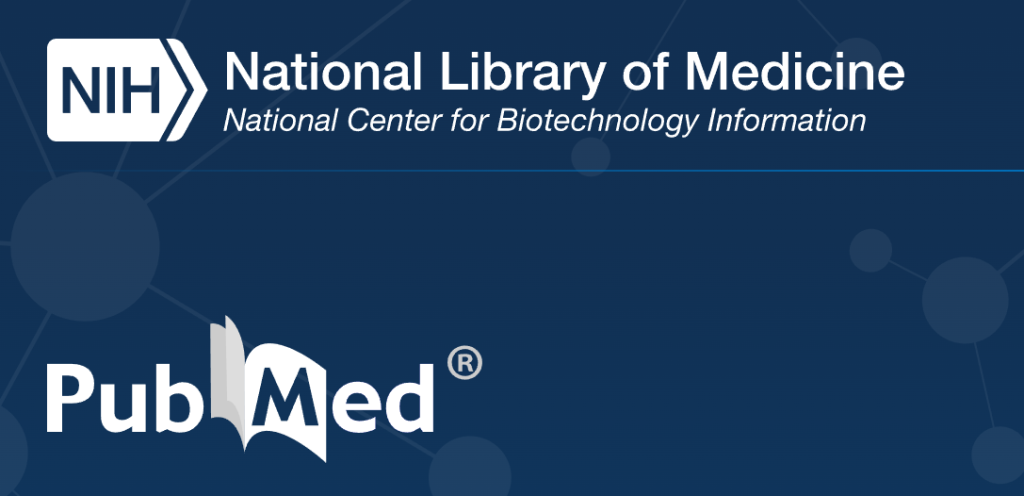
[1] Li, F., Harmer, P., Fitzgerald, K., Eckstrom, E., Akers, L., Chou, L. S., & Pidgeon, D. (2012). Tai Chi and postural stability in patients with Parkinson’s disease. New England Journal of Medicine, 366(6), 511-519.
https://www.ncbi.nlm.nih.gov/pmc/articles/PMC3285459/
[2] Song, R., Lee, E. O., Lam, P., Bae, S. C., & Park, Y. J. (2003). Effects of tai chi exercise on pain, balance, muscle strength, and perceived difficulties in physical functioning in older women with osteoarthritis: a randomized clinical trial. The Journal of rheumatology, 30(9), 2039-2044.
https://pubmed.ncbi.nlm.nih.gov/12966613/
[3] Wang, C., Schmid, C. H., Fielding, R. A., Harvey, W. F., Reid, K. F., Price, L. L., … & McAlindon, T. (2016). Effect of tai chi versus aerobic exercise for fibromyalgia: comparative effectiveness randomized controlled trial. BMJ, 354, i3893.
https://pubmed.ncbi.nlm.nih.gov/29563100/
[4] Yeh, G. Y., McCarthy, E. P., Wayne, P. M., Stevenson, L. W., & Wood, M. J. (2011). Tai chi exercise in patients with chronic heart failure: a randomized clinical trial. Archives of internal medicine, 171(8), 750-757.
https://pubmed.ncbi.nlm.nih.gov/21518942/
[5] Lavretsky, H., Alstein, L. L., Olmstead, R. E., Ercoli, L. M., Riparetti-Brown, M., Cyr, N. S., … & Irwin, M. R. (2011). Complementary use of tai chi chih augments escitalopram treatment of geriatric depression: a randomized controlled trial. The American Journal of Geriatric Psychiatry, 19(10), 839-850.
https://pubmed.ncbi.nlm.nih.gov/21358389/
[6] Yeh, G. Y., Wang, C., Wayne, P. M., Phillips, R. S., & Tai, C. (2013). Tai chi exercise for patients with cardiovascular conditions and risk factors: a systematic review. Journal of the American College of Cardiology, 61(3), 253-262.
https://pubmed.ncbi.nlm.nih.gov/19471133/
[7] Lam, L. C., Chau, R. C., Wong, B. M., Fung, A. W., Tam, C. C., Leung, G. T., … & Chan, W. M. (2011). A 1-year randomized controlled trial comparing mind-body exercise (Tai Chi) with stretching and toning exercise on cognitive function in older Chinese adults at risk of cognitive decline. Journal of the American Medical Directors Association, 12(4), 336-341.
https://pubmed.ncbi.nlm.nih.gov/22579072/
[8] Lee, M. S., Pittler, M. H., & Ernst, E. (2007). Tai chi for osteoarthritis: a systematic review. Clinical Rheumatology, 26(3), 389-396.
https://pubmed.ncbi.nlm.nih.gov/17874172/

Tai Chi is a practice that emphasizes the integration of mind, body, and spirit. Its slow and gentle movements are performed in a continuous and fluid manner. It promotes the cultivation and circulation of Qi, the vital energy that flows within the body, which nourishes the internal organs and promotes health and well-being. Tai Chi is based on the principles of Yin and Yang, which represent the complementary forces of the universe, so Tai Chi is suitable for both men and women, old and young alike.
Tai Chi works by regulating the flow of Qi and blood in the body. The slow and gentle movements stimulate the circulation of Qi and blood, which nourish the internal organs and promote health and well-being. Tai Chi also strengthens the muscles, tendons, and bones, improves posture and balance, and enhances flexibility and range of motion.
Tai Chi has numerous health benefits, including reducing stress and anxiety, improving cardiovascular health, reducing chronic pain, and improving immune function. Tai Chi can also enhance mental clarity, emotional stability, and overall quality of life. Regular practice of Tai Chi can lead to a healthier and happier life.
Tai Chi is deeply rooted in Taoist philosophy, which emphasizes the importance of balance, harmony, and naturalness. The concept of Wu Wei, or effortless action, is central to Tai Chi practice. By practicing Tai Chi, individuals learn to move with naturalness and ease, and to respond to their environment with fluidity and adaptability.
In Tai Chi, Qi refers to the vital energy that flows within the body. Qi is considered the foundation of health and vitality in ancient Chinese medicine. Tai Chi promotes the cultivation and circulation of Qi through slow and gentle movements, leading to improved health and well-being.
Tai Chi is considered an internal art because its practice emphasizes the cultivation of Qi and the integration of mind, body, and spirit. The internal arts of China are practices that focus on the cultivation of Qi, such as Tai Chi, Qigong, and Bagua. These practices promote health, vitality, and harmony within the body and mind.
In conclusion, Tai Chi is a holistic practice that promotes health and well-being through the cultivation and circulation of Qi. Its principles are deeply rooted in Taoist philosophy and the ancient Chinese medical tradition. By practicing Tai Chi, individuals can improve their physical, mental, and emotional health, leading to a happier and healthier life. If you are interested in learning Tai Chi, come and join us at one of our local clubs